By Neil S. Bulk
John Williams’s Superman: The Movie returns!
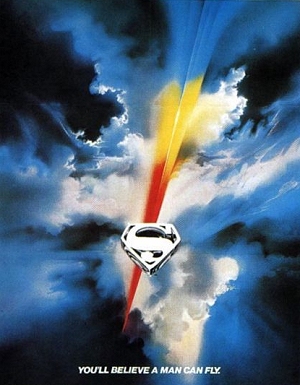 John Williams’s Oscar nominated 1978 music for Superman: The Movie is back on CD, better than ever as part of Film Score Monthly’s new Superman: The Music (1978-1988) box set. The score, which has had a previous 2-CD release, is offered here fully remastered from recently discovered source material and assembled as intended by John Williams thanks to a key discovery made during the restoration process!
John Williams’s Oscar nominated 1978 music for Superman: The Movie is back on CD, better than ever as part of Film Score Monthly’s new Superman: The Music (1978-1988) box set. The score, which has had a previous 2-CD release, is offered here fully remastered from recently discovered source material and assembled as intended by John Williams thanks to a key discovery made during the restoration process!
To get all of the details about this release, I had the opportunity to discuss this score in depth with the set’s co-producer, Mike Matessino. Mike has previously worked on the Williams scores for the original Star Wars trilogy as well as Home Alone 2 – Lost in New York, Goodbye, Mr. Chips and A Guide for the Married Man. Mike was no stranger to this material either, having co-produced the previous Superman: The Movie 2-CD set.
Neil S. Bulk: Mike, I’m going to start off with the big question: why Superman: The Movie again?
Mike Matessino: The last one didn’t take! It went out of print, which was kind of unexpected.
NSB: But at least that provided you the opportunity to revisit it. Is this release drastically different from the previous album you co-produced? In terms of the first score, of course. We’ll get to the sequels later.
MM: Right. Same score but completely different in approach. Rhino wanted to do the project because of the success of Star Wars but that was in 1998 and no one knew what elements were available. As it turned out Nick Redman and I were able to restore the entire score but it was pieced together from a variety of sources, as there didn’t seem to be anything else. A lot of fans of this music know that as soon as we were finished an intact and better source materialized which was used to remix the movie in 2001, the DVD release of which had an isolated score. So that made it possible to redo the soundtrack using that source.
NSB: Right, you could hear a quality difference between the Rhino and that isolated score, but it was frustrating, since the isolated score was cut to match the picture, so it wasn’t a very pleasant listening experience, despite the better source material.
MM: There was an opportunity to synchronize some of the unused music with the picture, which I’ve done on isolated-scores, but they chose to just provide what was in the film. There were also additional cues in the bonus features on DVD and at the time I was disappointed that they didn’t present some of the newly-discovered material there, meaning the cues we didn’t have when the Rhino album was done. In retrospect it turns out this was an advantage because it gives us some previously unreleased material on the new version. As I recall the DVD iso-score also added a lot of reverb to the track. It wasn’t really a full-scale restoration and of course the audio was compressed. The Film Score Monthly release is a true restoration. It sounds better than it ever has.
NSB: I’m noticing that as I’m listening to this. The main title is also different, isn’t it?
MM: Which one?!
NSB: The main title to Superman: The Movie (disc 1, track 2). This is a different version than any previously heard.
MM: It’s the version that Williams created to synchronize with the main credits of the film as we all know them. The main section, or the march, was used in the film for the end credits, but it was actually the “main title.”
NSB: What was used in the movie then for the main titles?
MM: The march that Williams wrote for the “End Title.” It’s so confusing that I literally had to draw Lukas Kendall a picture to explain it. His response was that he wanted to put the picture in the CD book, so that’s what we did! We have a 2-page spread explaining the three different versions of the marches and how and where they were used.
NSB: That’s intense! Do you have any idea why there was so much indecision going on with the march?
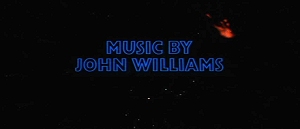 MM: The answer continues to be elusive. We have the short original version of the main title, which begins with the familiar fanfare introduction, and Pierre Spengler, the producer, remembers that this was done for an earlier, less elaborate version of the credits but he doesn’t remember any specifics. But he’s the only one who seems to remember that there waseven a different version of the credits. John Williams, Richard Donner, Tom Mankiewicz, Stuart Baird, Ilya Salkind… none of them recall the change or why the music written for the final version would have been swapped out with the end title recording. They had something that synchronized very specifically with the sequence but then went to the trouble of pitch-shifting and editing the end credits instead. There must have been a reason but whatever it is has been lost to history.
MM: The answer continues to be elusive. We have the short original version of the main title, which begins with the familiar fanfare introduction, and Pierre Spengler, the producer, remembers that this was done for an earlier, less elaborate version of the credits but he doesn’t remember any specifics. But he’s the only one who seems to remember that there waseven a different version of the credits. John Williams, Richard Donner, Tom Mankiewicz, Stuart Baird, Ilya Salkind… none of them recall the change or why the music written for the final version would have been swapped out with the end title recording. They had something that synchronized very specifically with the sequence but then went to the trouble of pitch-shifting and editing the end credits instead. There must have been a reason but whatever it is has been lost to history.
NSB: That’s a big deal though, getting Williams’s original idea for the main titles presented here for the first time in this quality. Why wasn’t it presented this way before?
MM: It’s interesting because it sort of speaks to how the soundtrack market has evolved over the past decade. The fans have learned more about what they’re listening to and there is a lot of direct communication among them on message boards and so forth, especially on ones affiliated with the record labels that release these scores. At the same time, I and everyone else who actually produce these releases have also continued to evolve and it’s led to some different thinking than we had ten years ago. Back then it seemed that everyone wanted the film version of the Superman opening, and on the Rhino release we provided something that would fulfill that, but now it seemed more important all around to be true to the composer’s intentions and I think the fans really respect that. With Superman we were fortunate that because of our box set format we were able to present multiple versions, the three as composed by Williams and the three as edited for the film or the original album.
NSB: So now everyone can set up their iPod playlist to start with whatever version of the main title they want. Nothing is left off.
MM: Right. I think I even said back in our last interview that we now all think of these things as something we can personalize. For me, though, and I think for you too as I recall, the Superman score really makes sense when you have Williams’s intended opening. If you synchronize it with the film you can see how he put in bits of orchestration to match some of the imagery precisely. That’s lost in the actual film version.
NSB: The mystery of the “crash” at the end of the main titles has certainly been solved. It never seemed right in the end titles and now I know why. Were there any more little mysteries uncovered about this score?
MM: Not so much about the score specifically, but yes in terms of how the film was different at the time Williams spotted it. The big archaeological find this time around was music editor Bob Hathaway’s book containing the spotting notes and recording and mixing logs.
We know, for example, about some extra dialogue that was in the film at that point, a lot of which we still haven’t seen. And we also know that the ending of the cue “Trajectory Malfunction” was meant to go with the cut golf course scene where a government agent gets a call about the missile and has to tell the President. We know that scene was cut very late since the agent is listed in the end credits even though the scene was not in the film. We also learned that during “The Kryptonquake” is when we were supposed to see the crystal ark passing the phantom zone villains in space and not during “The Trip to Earth.” In the music you can hear a passage that recalls the arrival of the phantom zone “mirror” in “The Dome Opens”.
When we did the Rhino album I had spoken to Bob Hathaway and he only came up with a few pages of notes. But then he passed away on New Years Day of 2003 and when his wife was cleaning out the attic she found that book and sent it to the Warner Music Library. And there it sat, waiting for our project to come along!
NSB: What exactly are spotting notes?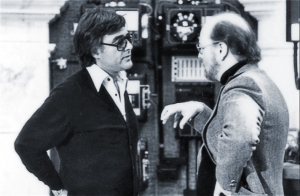
MM: After the composer and the director ‘spot’ the picture, meaning they decide where music is going to start and where it’s going to stop, the composer runs the pieces of film to be scored with the music editor, who takes notes on all of the action in precise detail in increments of tenths of a second. He then types this all up and the composer uses it as he writes the cues and this is how the music is designed to hit every moment of the action exactly.
NSB: And the version of this book that you had was for an edit of the picture that was different than the final release version? Was it closer to the 151 minute version released on DVD or even the 3 hour TV cut?
MM: I’d say neither. First of all you have to remember that Williams agreed to do this score a little at a time because it was taking longer than expected. He thought he’d be seeing the finished film in June of 1978 but instead he only saw some of it, comprising 16 music cues. The rest came in later and gradually, and by the time he got to those some of the earlier scenes he’d done had been recut and in a few cases (like the main title) he went back and did the cues over entirely. But overall it seems that the movie was pretty much in a rough version of the theatrical cut. The scenes that were restored for the 151 minute version were already gone, but there were other bits of footage, again including dialogue that wasn’t even in the long TV version, that were still in there.
NSB: Getting back to the new source material, what was its condition? Was a major restoration needed for it?
MM: It was a 6-track 35mm mag film source containing all of the complete cues already edited. It was in very good shape and in fact what I used was the same digital transfer session that had been done in 2000 when it was first located. But I did treat it as a full restoration because I wanted this to sound better than it ever has. I did a lot of work on it to remove pops, ticks and even some stage noise. I also got rid of the splatters caused by overmodulation and smoothed over some nasty analog tape edits and bumps and the awful pitch shifts that we used to get when those were done. Not only did I come at this with a lot more experience than eight years ago, but the technology involved has also improved drastically.
NSB: How would you describe the differences in sound between this release and the previous releases of this score?
MM: To my ear this is the first time it sounds consistent. The original album sounded okay for the time, but was obviously mastered for late 70s standards. Even so there were some things there that sounded better than anything else, the edited concert version of “Theme From Superman,” for example. “The March of the Villains” also came from the album master because that was not on the new 6-track. But it was fairly easy now to tweak those so that they sound uniform with the rest of the material. “The March of the Villains” is at the correct pitch now for the first time. It was slightly fast on the album. For the Rhino release we used the album master as well as three other sources, a 6-track that was one or two generations dubbed down from the new source, a 3-track source used for the TV version, and a stereo reel of outtakes. So in terms of putting the score together that project was far more difficult and perhaps even satisfying to achieve because it felt like I was restoring something that truly seemed to be lost. This time around I was able to focus entirely on the quality of the recording and I think the difference is phenomenal. Again it’s a combination of a better source, more sophisticated technology, and the experience I’ve accumulated in the intervening years. As with Goldsmith’s Alien last year I feel very fortunate that I was able to come back to Supermanand really make it as perfect as it can be and put a period on it.
NSB: You mentioned earlier that the new source material was found right around the time that the Rhino album was being released. Do you know why it wasn’t located earlier during the initial search?
MM: I do.
NSB: Would you mind elaborating then?
MM: First of all I have to say that if memory serves, I first heard the new material on the day that the Rhino album hit the stores. The alternate version of “The Dome Opens” was played for me. I probably don’t have to explain how I felt.
NSB: You heard that then?
MM: Yes. Eight years ago.
NSB: Oh man!
MM: I assumed it would be in the “additional music cues” section on the DVD.
NSB: That would have made sense, but I guess it was a good thing it was left off.
MM: I’d say so, although Superman fans have already heard it more than a few times. But getting back to the discovery of the elements…
NSB: Yeah, we’ll get to the alternates shortly.
MM: …they were found at Pinewood Studios in England. Now, when I was there in 1999 I inquired about elements that may have been overlooked, but it seemed that the search had been thorough. What I didn’t realize then is that materials on which storage fees have not been paid do not show up in any inventories.
NSB: So they were just sitting at Pinewood waiting for someone to pay the bill?
MM: That’s about it. There was a lot of legal turmoil over the Superman property going on at that time. It involved DC Comics, the Salkinds and the Siegel and Shuster estates. A lot of it is still going on but at the time Warner Bros. was attempting to get it all straightened out so that ownership and control of the franchise and its assets were more streamlined. The initial DVD releases of the four movies in 2001 were part of this effort and so all of the storage bills were paid and everything was liberated and sent over. Among the material was the 6-track scoring master.
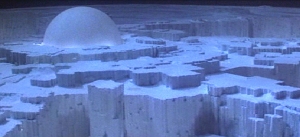 NSB: You’ve already mentioned the alternate version of “The Dome Opens,” which is probably the most exciting of the new Superman: The Movie music to be featured in this set. This cue runs longer than the final scene. Did the spotting notes shed any light on what this was meant to accompany?
NSB: You’ve already mentioned the alternate version of “The Dome Opens,” which is probably the most exciting of the new Superman: The Movie music to be featured in this set. This cue runs longer than the final scene. Did the spotting notes shed any light on what this was meant to accompany?
MM: I think we were supposed to see a close shot of the dome closing. But you know that, Neil, you read them too!
NSB: I forgot. You’ve been working on this since 2006, but I do recall seeing in the film the dome closing, but it’s an extreme long shot. I first noticed that in a theatrical screening I attended after reading those notes.
MM: I personally didn’t care for the extended version of the film with the revamped sound mix, but they did do a nice restoration job and that kind of detail comes through as opposed to the old video transfers that didn’t represent the film very well. And yes, I did start this in 2006. In fact, I think I already knew about it before Goodbye, Mr. Chipscame out.
NSB: That was what, April 2006?
MM: St. Patrick’s Day, actually.
NSB: So what took so long?
MM: The book, mostly. The music was done before 2006 ended. The writing, proofreading, design, approval and manufacturing was a huge undertaking that went on far longer than we anticipated.
NSB: It looks like all the time and effort was worth it though.
MM: It is. But it amazes me that we first thought we might release this when all the DVDs were coming out at the end of 2006. Eventually I felt that we might have gotten lost in all of that and now we get to come out on our own in celebration of the film’s 30th anniversary and the 70th anniversary since the first comic book appearance of Superman.
NSB: And the 85th anniversary of Warner Bros., who will be celebrating the music from their films at the Hollywood Bowl, which Superman: The Movie “Creative Consultant” Tom Mankiewicz thinks looks like the Krypton dome opening.
MM: The annual Movie Night concert, yes. Which I’ve also worked on a few times. I don’t know yet what they’ll do from Superman but I can’t imagine it won’t be represented.
NSB: There are other alternates on here, including a radically different version of “The Mugger”. Do you know what prompted the change with this cue?
MM: Based on the fact that the revision was actually titled “More Mugger” it seems that they wanted music to play through the entire scene instead of stopping after the guy runs off and to play it a bit more whimsically. The original is more tense.
NSB: It sounds like Williams wrote a short motive for random criminals in the film since part of the alternate is heard later in “Chasing Crooks”.
MM: It’s not exactly the same but it’s close. Taken in that context it definitely draws attention to the obvious difference, which is the big Superman fanfare at the end of “Chasing Crooks.”
NSB: The alternate “Mugger” reminds me of the alternate “Binary Sunset” from Star Wars. Not that the two sound anything alike (they don’t) but that both have hints of music that will be heard later. In the case of the alternate “Binary Sunset” a motive is played that later turns up when 3PO is found broken, after the Tusken Raider attacks.
MM: Yes, kind of a “droids in trouble in the desert” motive, I guess.
NSB: It adds depth to hear these “new” alternates after years of listening to these scores. Suddenly you get a clearer picture of what the composer was trying to accomplish.
MM: There’s another instance like this that unfortunately can’t be heard on the album. At the beginning of “The Planet Krypton”, after the big fanfare, there’s a motive played by a clarinet solo. It wasn’t used in the film but it’s in the full cue. Williams returned to that motive in an early, unrecorded version of “The Fortress of Solitude.”
NSB: I know that clarinet piece. Isn’t it dialed out in the film?
MM: That’s right. Mainly because it was meant to cover some additional Jor-El dialogue that was there when the scene was spotted.
NSB: So was the appearance in the alternate unrecorded “Fortress of Solitude” also meant to go with the appearance of Jor-El?
MM: No, it would have come before that, I think, with the formation of the fortress. It’s hard to tell, really, because this version is so completely different.
NSB: How did you learn about this unrecorded version and are there other pieces that Williams composed that were not recorded?
MM: A copy of the original manuscript is in the Alexander Courage Collection at the Eastman School of Music. There is also an alternate of “The Trip to Earth” that doesn’t seem to have been recorded. Apparently the Jor-El narration during that sequence was an idea that came later and it was created editorially. So the original version of the cue was shorter and quite different, much grander, and with a somewhat religious quality. There’s also an alternate of “Baby Lifts Lorry,” which may or may not have been recorded. It used the Personal motive instead of the Fanfare.
NSB: The Personal motive?
MM: We hear it prominently in “The Terrace” and “Clark Loses His Nerve,” but it’s introduced in “The Kryptonquake.” Sometimes it’s thought of as a theme for Clark. Melodically it works as a bridge between the Fanfare and the Love theme.
NSB: It has a tragic quality about it in “The Kryptonquake”, doesn’t it?
MM: Definitely. I’m not sure why Williams introduced the theme there, but it works. Unfortunately you can’t really hear it in the movie. It was partly dialed out, I think, but when the music comes back in there’s just a bit of noise going on. Nothing major, just a planet meeting its doom.
NSB: It’s a very effective scene, even with the music coming and going. A lot of the music in the film is cut up, which seems to be because Williams scored a longer version, but it never really distracts.
MM: “Helicopter Sequence” was definitely shortened by almost a minute. I’d love to see the version of it that was scored. “Lex Luthor’s Lair” is also longer than the scene in the film. Apparently the tracking of Otis to the lair was longer than the theatrical cut but shorter than the TV version. Later in the film, however, the tendency seems to have been to let the jeopardy unfold without the music that was recorded for it and to bring the score in when Superman makes a big entrance. This happens with “Air Force One,” “The Golden Gate Bridge” and “The Rescue of Jimmy”.
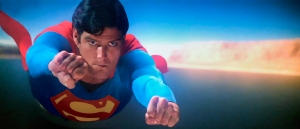 NSB: You just mentioned the TV edit. In the released version of the movie there is a music edit in the middle of “Chasing Rockets” that was meant to show Superman attempting to catch the army rocket. This actually turned up in the TV version with the correct music restored. Were there other instances of that happening in the TV version, where Williams’s music was properly integrated back in to the movie?
NSB: You just mentioned the TV edit. In the released version of the movie there is a music edit in the middle of “Chasing Rockets” that was meant to show Superman attempting to catch the army rocket. This actually turned up in the TV version with the correct music restored. Were there other instances of that happening in the TV version, where Williams’s music was properly integrated back in to the movie?
MM: You’re referring to when Superman attempts to catch the missile head-on but its avoidance system causes it to go around him, right? I think that should have been left in the movie. As a kid from New York I couldn’t figure out why Superman was chasing an eastbound missile from behind if he was coming from Metropolis, which was obviously just New York with a name change. That moment provided a solid explanation.
NSB: I think it was cut because the effects weren’t perfect for it, but it did explain a lot and it had some nice music written for it. And where is that sequence on the DVD set?
MM: It would have been nice to have in widescreen and with the restoration that was done to other shots in the film maybe that sequence could have been made to look better. The TV version didn’t always restore the music exactly because it had a lot of footage added back in beyond anything Williams even saw. But some of it approximates it such as the scene where Lara carries the baby into Jor-El’s lab and then the star ship’s launch. What that shows us is that from the time where Trevor Howard says “The decision of the council is final” to the arrival of the ship on Earth Williams planned to have music continue straight through. The music was also restored for the explosion of the California missile and Superman flying into the fault and the start of the earthquake. As I said earlier they elected to bring the music in when Superman started rescuing people. I think it works well that way, but as with other cases similar to this, The Empire Strikes Back, for example, the score gives you a musical version of the narrative.
NSB: Oh it absolutely does, and I think that’s what distinguishes a Williams score from 30 years ago versus a modern Williams score.
MM: That’s a big can of worms, Neil. The approach to scoring is completely different now, the movies are completely different. But if you’re referring to the phenomenon of wall-to-wall scoring, which is quite common now, it’ seems that a lot of people don’t grasp that it’s impossible for the music to say anything unless it is absent. If it’s always there it’s wallpaper. But even if all the music in Superman was used it still wouldn’t have been wall-to-wall.
NSB: It would not have been wall to wall but it would have been awfully close. Wasn’t there even a scene spotted to have music but nothing was ever written for it?
MM: There was supposed to be some music as Clark tries to make a dinner date with Lois.
NSB: That scene works just fine without music.
MM: I agree. Sometimes you don’t realize how effective a scene is until it’s dubbed and all the sound effects are in, and so the music is left out. That may also have had something to do with the change for “The Mugger.” The revised cue introduces the Love theme, so musically you’re already set up for what happens in the helicopter sequence. Music also gives things a less realistic quality sometimes. That certainly is the case with the earthquake material. In that Daily Planet shot you have one long, unbroken take with some very tricky movements on the part of the camera and the artists. With the sound effects in it you suddenly have a totally believable city room of a big newspaper. Music there would have detracted when its purpose should always be to enhance. That’s really important with a movie likeSuperman where there are long stretches where the music is the focus of your attention, like the opening credits and also the flying sequence.
NSB: The Flying Sequence! That’s something you would never see in a modern blockbuster, which is a shame, because it’s such a lovely scene. It also seems that this was the scene that the filmmakers were the least sure about, as this set offers plenty of variants, more than even the Rhino set did. Can you explain all of the differences?
MM: What we call “The Flying Sequence” is really four separate cues: “I Like Pink,” “I Can Fly,” “To the Moon” and “Can You Read My Mind.” Another previously unreleased track is a shorter version of the “I Can Fly” portion that was done to accommodate a different edit that showed less of the Statue of Liberty. They ended up cutting it even shorter than that, and so they used the original version and cut it down to fit the final scene. But the last part of the sequence was the cause of a lot of uncertainty. It was recorded on the last day of the sessions, November 4, 1978, and they recorded three versions so that they could later decide which one to use. First there was a kind of pop version that was meant to have a sung lyric with it and then there was the same arrangement but with additional instruments providing the melody, so no vocal was supposed to go with that. Then there was the orchestral version that ended up in the film. Donner wanted the lyrics but he also wanted Margot’s voice. She couldn’t sing it well so he had her recite it, much to the dismay of our old friend Leslie Bricusse.
NSB: Bricusse objected to the spoken version?
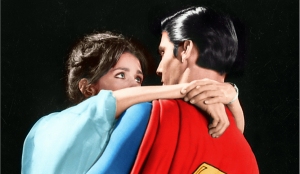 MM: I guess that’s a diplomatic way of putting it. I think it came out in the interview I did with him for Goodbye, Mr. Chips. He felt that he’d timed the lyric to the film precisely and really thought it would make a nice song sequence, and he was very unhappy with how it ended up. He says he has to turn the movie off whenever that part comes on. It turns out that Margot Kidder thought that the recording session for the vocal was “mortifying.” So with so much emotion surrounding this I thought it best to maintain what was done on the Rhino release, which was to leave the vocal off in the body of the score and present it with the vocal as a bonus track. This time, however, we have it twice. First we have the film version of “Can You Read My Mind” on disc 2 and then the entire original album version of “The Flying Sequence” on disc 8. The placement of Margot’s vocal is different from one to the other but we still have no idea why. The album one is correct in terms of where Williams wanted it to go. The other mystery that has not been solved (along with what the original main title was like) is whether the song was, in fact, recorded by a singer for the film. There is no evidence of it at all, but Leslie swears that Toni Tennille did it. He never heard it, though, so it’s possible she was hired to record it but never did. I guess there are still many opinions about the scene, but musically all the variations are offered.
MM: I guess that’s a diplomatic way of putting it. I think it came out in the interview I did with him for Goodbye, Mr. Chips. He felt that he’d timed the lyric to the film precisely and really thought it would make a nice song sequence, and he was very unhappy with how it ended up. He says he has to turn the movie off whenever that part comes on. It turns out that Margot Kidder thought that the recording session for the vocal was “mortifying.” So with so much emotion surrounding this I thought it best to maintain what was done on the Rhino release, which was to leave the vocal off in the body of the score and present it with the vocal as a bonus track. This time, however, we have it twice. First we have the film version of “Can You Read My Mind” on disc 2 and then the entire original album version of “The Flying Sequence” on disc 8. The placement of Margot’s vocal is different from one to the other but we still have no idea why. The album one is correct in terms of where Williams wanted it to go. The other mystery that has not been solved (along with what the original main title was like) is whether the song was, in fact, recorded by a singer for the film. There is no evidence of it at all, but Leslie swears that Toni Tennille did it. He never heard it, though, so it’s possible she was hired to record it but never did. I guess there are still many opinions about the scene, but musically all the variations are offered.
NSB: The scene is what it is. I think it was a gutsy decision to include such a tender scene in a comic book movie.
MM: I think Mankiewicz pointed out that the goal was to make a movie for adults that kids could see. The whole thing was gutsy. I like the scene because it’s cinema doing what cinema can only do: use image and music to develop character. As a soundtrack experience I like it without the vocal. In the movie I think it’s great with it.
NSB: Some of the other extras on this set will come as a surprise to those that have never seen the longer television edit of this movie. Theatrically, this movie used existing rock songs in some sequences but it turns out original music was written for them and they are presented here. What can you tell me about those?
MM: It’s not unusual for a composer to be asked to write and/or record all the music for radios and other diegetic sources, so Williams did several for Superman. The only one that was used in the theatrical version was the one we had on the Rhino set, “Luthor’s Luau.” This time we have three others to present including the one that was replaced with “Rock Around the Clock.” To digress for a second, that was a kind of odd choice for that song, wasn’t it? It came out in 1955 yet high school students are playing it in the car in 1965.
NSB: Maybe they were feeling nostalgic.
MM: High school kids in Kansas?
NSB: Maybe Brad’s car radio only picked up the oldies station.
MM: Ba-dum-bum.
NSB: We have a winner!
MM: Anyway, the TV version put back in “Kansas Kids” instead of “Rock Around the Clock,” but the sequence was extended so that Brad takes so long to drive to the Kent farm that Clark could have gotten there on the back of a snail. So we have that and also “Kansas High School,” which was written for the car radio as the kids leave the football field. And we also have a piece done for Lois’s car radio in California that was also used in the TV versions.
NSB: Was there anything recorded for Superman: The Movie that you were not able to include in this set?
MM: Just a few bits of source music, some of which we had and some we didn’t. There was an organ hymn tune called “Sunday Meeting” that was supposed to be coming from the radio in the Kents’ pickup truck. The sound was pretty bad on it. There was also a piece called “Late Night Country Music” that was replaced with “Only You.” We only had a 15 second fragment of it. Of the material we didn’t find at all the manuscripts revealed that each piece was only a few bars long, no more than a few seconds per cue. At the back of the book we included a rundown of all the additional source music in the films, the songs and so forth, that aren’t included. In terms of score, however, apart from anything where we don’t know whether or not it was recorded (such as the alternate “Baby Lifts Lorry”), nothing was left off.
NSB: Well it’s a fantastic presentation of what is my personal favorite film score and I know a lot other people can’t wait to hear this music either. It’s amazing to me that 10 years ago people were campaigning to get an expanded release of this score and since then we’ve had the Varese Sarabande re-recording, the Rhino album, the isolated score and now this set. That really says a lot about the quality of this music, doesn’t it?
MM: It remains one of Williams’s greatest accomplishments, and I mean that in a way that goes beyond just musical composition or the skill of being a good film composer. It certainly succeeds at that level, but the score goes a long way to encapsulating the whole Superman mythos on its own even apart from the movie. The average person instantly recognizes the march but the fans who know and love the score in its entirety want it to be preserved and presented in the best quality and that’s what we’ve done.
NSB: That’s just it! The music captures the essence of the character. It’s hard to believe that the character existed for 40 years without this theme.
MM: And 30 years with it. And also that Williams claims that he didn’t research any of the previous music, yet he went for some of the same ideas that had been implemented for the music heard in the Fleischer cartoons and the TV show from the 1950s. I can only suspect that as a kid he saw some of those that maybe had an unconscious effect on what he did with it. The major 5ths and the triads and the dotted rhythm that sounds like it’s saying “Su-perman!”… they’ve all been in the themes for the character from the very beginning. It’s a fascinating phenomenon. Of course this takes nothing away from the brilliance of what was achieved. It was Strauss and Wagner crossed with Copland and Sousa. Perfectly logical and it seems like a simple idea, but pulling it off successfully called for a stroke of genius and that’s what we got.
NSB: Yes, that’s exactly the way to put it! Mike, I want to thank you for your time discussing this score with me and for you and Lukas Kendall and everyone else involved with making this set happen. For a John Williams fan and a Superman fan it has everything. Great music, wonderful sound and a book that goes into great detail about all of it. What more could anyone ask?
MM: Sequels?
Of course, the sequel scores! Superman: The Movie is just one small part of this 8 disc set. Ken Thorne was brought in to adapt Williams’s music for Superman II and he used the Williams material in his Superman III score, while getting the opportunity to write his own music as well. And Williams came back to the series for Superman IV : The Quest for Peace to write new themes which were then adapted by Alexander Courage. Mike and I will be back to discuss all of them shortly!
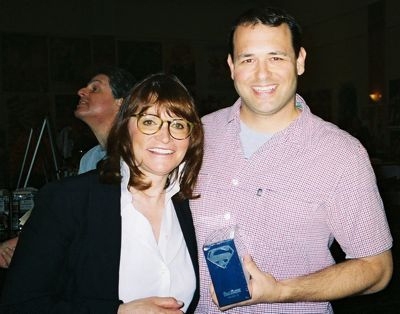
Margot Kidder and Mike Matessino
